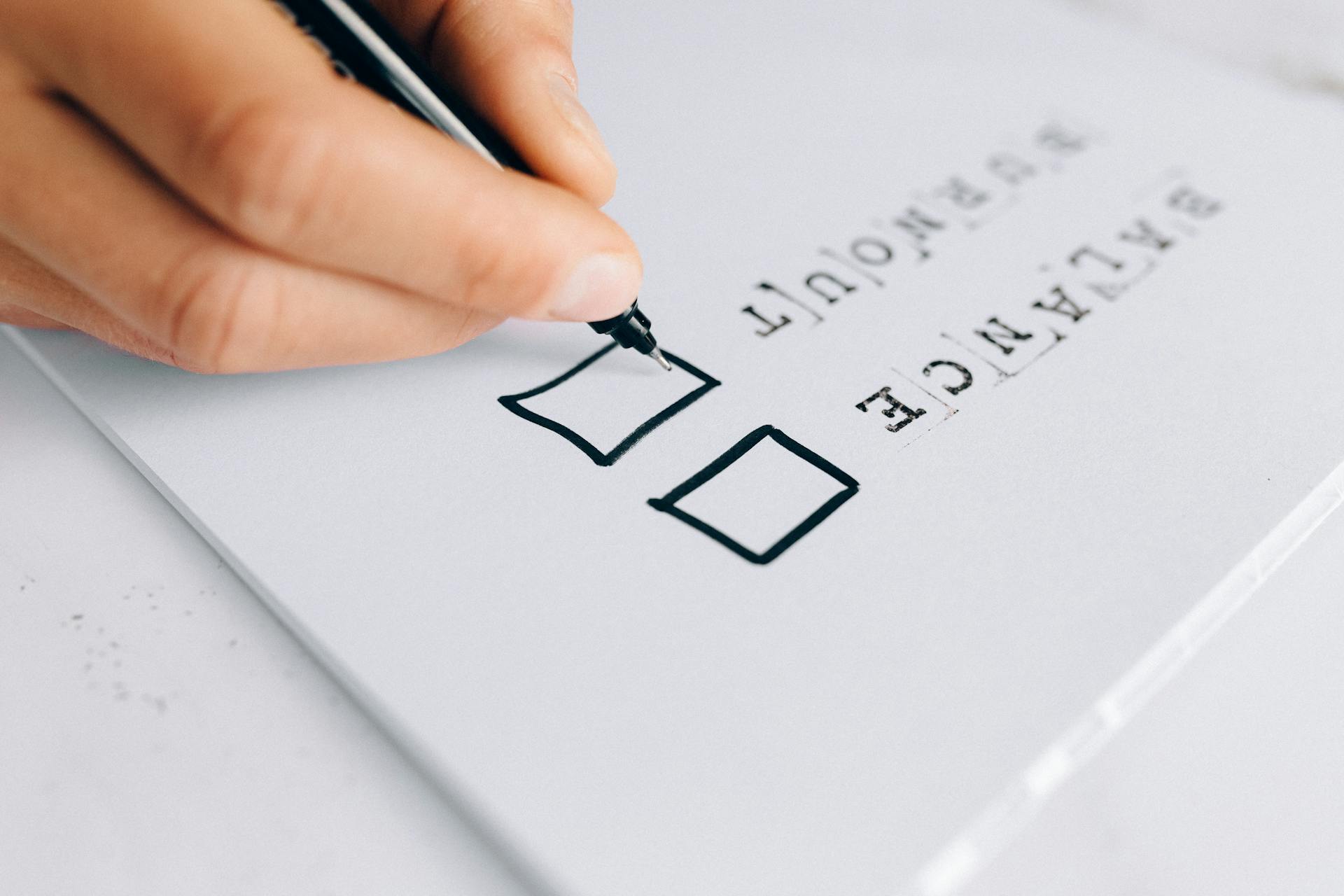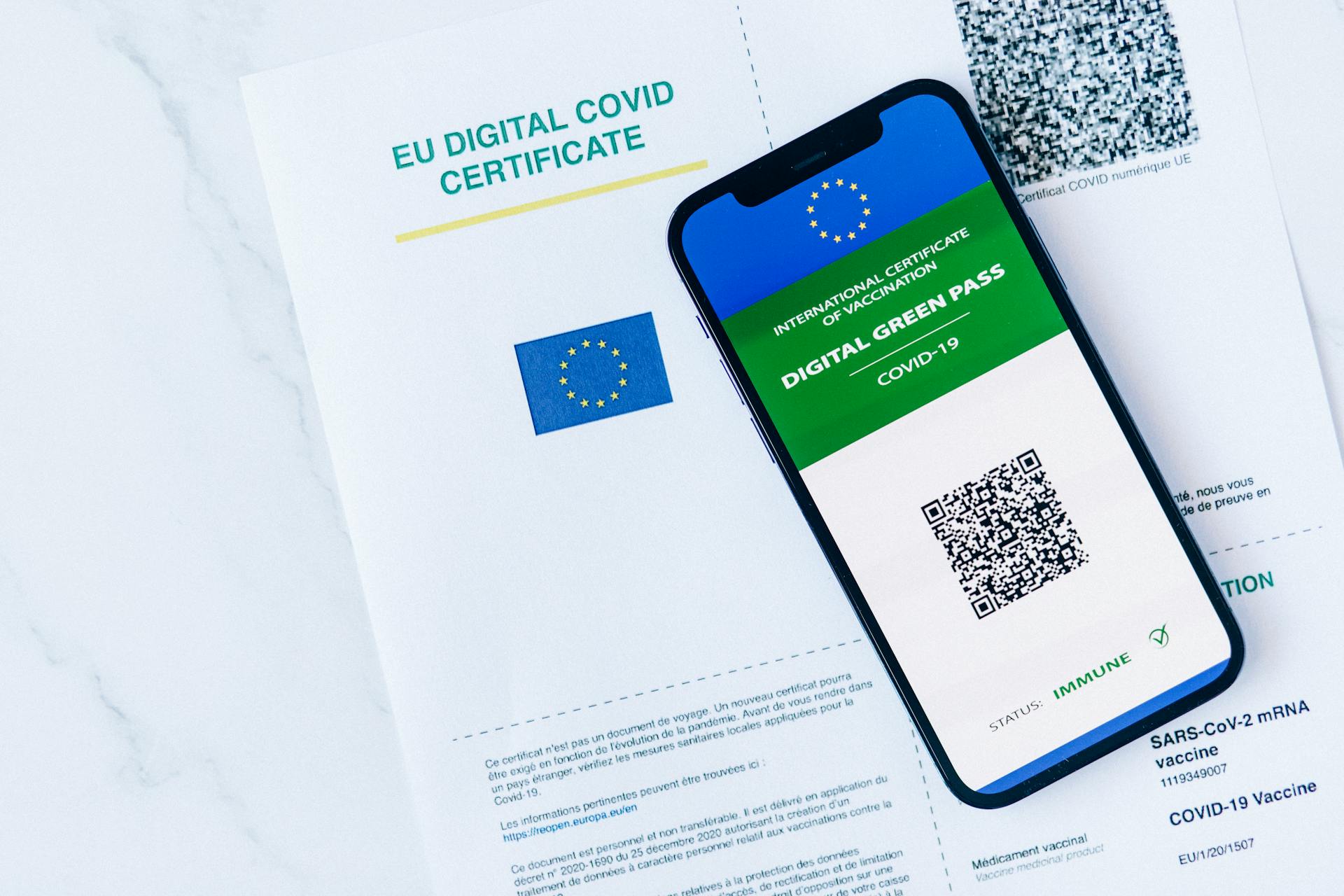
HIPAA is a complex law, but understanding its basics is crucial for healthcare professionals and individuals alike. HIPAA was enacted in 1996 to protect the confidentiality, integrity, and availability of protected health information.
Covered entities under HIPAA include healthcare providers, health plans, and healthcare clearinghouses. These entities must comply with HIPAA's requirements to safeguard protected health information.
HIPAA Requirements
To be HIPAA compliant, covered entities must have a privacy official, such as a chief privacy officer (CPO), appointed to develop and implement policies and procedures. This official must be responsible for ensuring that employees, including volunteers and trainees, are trained on policies and procedures.
Covered entities must also maintain appropriate administrative, technical, and physical safeguards to protect the privacy of protected health information (PHI). This includes implementing a process for individuals to make complaints concerning policies and procedures.
If PHI is disclosed in violation of policies and procedures, covered entities must mitigate any harmful effects to the furthest extent possible.
Here's an interesting read: What Information Is Protected in Hipaa
Administrative Requirements

You need to have a privacy official, such as a chief privacy officer, in place to develop and implement policies and procedures. This person is responsible for ensuring compliance with HIPAA.
To train employees, including volunteers and trainees, you must provide them with policies and procedures to follow. This is a crucial step in preventing data breaches and protecting patient information.
Administrative, technical, and physical safeguards must be maintained to protect the privacy of protected health information (PHI). This includes ensuring that only authorized personnel have access to patient data.
A process for individuals to make complaints concerning policies and procedures must be in place. This allows patients to report any concerns they may have about their PHI.
If PHI is disclosed in violation of policies and procedures, you must take steps to mitigate any harmful effects. This may involve notifying patients, providing additional security measures, or taking other corrective actions.
Here are the key administrative requirements:
- Appoint a chief privacy officer (CPO) or equivalent
- Train employees, including volunteers and trainees
- Maintain administrative, technical, and physical safeguards
- Establish a process for individual complaints
- Mitigate harmful effects of PHI disclosures
What is Disclosure?
Disclosure is the release of PHI outside the entity holding it. This can include transferring, providing access to, or divulging PHI in any manner.
The Privacy Rule defines disclosure as the release, transfer, provision of access to, or divulging of PHI outside the entity holding the PHI. This includes any release or transfer of PHI outside of an entity's designated covered components.
Any release or transfer of PHI outside of an entity's designated covered components is considered a disclosure. This means that even if you're working within the entity, if you release PHI to someone outside of your designated area, it's still a disclosure.
Disclosure can happen in various ways, including the release, transfer, provision of access to, or divulging of PHI in any manner.
Recommended read: Hipaa 5 Components
HIPAA and Healthcare
HIPAA stands for the Health Insurance Portability and Accountability Act, a law that protects the privacy and security of individually identifiable health information. This law applies to covered entities, which include health plans, healthcare clearinghouses, and healthcare providers that transmit healthcare data.
Broaden your view: Hipaa Law Definition

The law permits a covered entity to use and disclose protected health information (PHI) without an individual's authorization for certain situations, such as treatment, payment, and healthcare operations. There are 12 national priority purposes that allow for the use and disclosure of PHI without authorization, including public health activities, victims of abuse or neglect, and law enforcement.
Here are some of the permitted uses and disclosures under HIPAA:
- Disclosure to the individual
- Treatment, payment, and healthcare operations
- Opportunity to agree or object to the disclosure of PHI
- Incident to an otherwise permitted use and disclosure
- Limited dataset for research, public health, or healthcare operations
The Department of Health and Human Services (HHS) has also established rules for Administrative Simplification, which includes the Privacy Rule, the Transactions and Code Sets Rule, the Security Rule, the Unique Identifiers Rule, and the Enforcement Rule. These rules aim to increase the efficiency of the healthcare system by creating standards for the use and dissemination of healthcare information.
On a similar theme: Hipaa Omnibus Final Rule
Permitted Uses and Disclosures
Under HIPAA, covered entities are allowed to use and disclose PHI in certain situations. These situations include when the information is required for access or accounting of disclosures, the entity must disclose to the individual.

The law permits a covered entity to use and disclose PHI without an individual's authorization for treatment, payment, and healthcare operations. This means that healthcare providers can share PHI with other healthcare professionals involved in a patient's care.
Some examples of permitted uses and disclosures include incident to an otherwise permitted use and disclosure, limited dataset for research, public health, or healthcare operations, and public interest and benefit activities. The Privacy Rule permits use and disclosure of PHI for 12 national priority purposes.
Here are the 12 national priority purposes:
In general, covered entities are allowed to use and disclose PHI if the Privacy Rule specifically permits or requires it, or if the subject of the information gives written authorization.
Health Care Access and Portability
Health care access and portability are crucial aspects of HIPAA, ensuring individuals can maintain coverage and receive necessary care despite life changes.
Under HIPAA, group health plans are required to provide continuity of coverage for participants and beneficiaries, including dependents, when there is a change in family status, such as marriage, divorce, or the birth of a child.

Individuals can keep their health insurance coverage even if they move to a new state, as HIPAA prohibits group health plans from discriminating against individuals based on their place of residence.
The Consolidated Omnibus Budget Reconciliation Act (COBRA) allows individuals to temporarily continue their group health plan coverage if they lose their job or experience a reduction in work hours.
Health care providers must also honor patients' requests to transfer their medical records to a new provider, ensuring continuity of care.
Health Care Reform
Health care reform is a significant part of HIPAA, and it's focused on making the health care system more efficient. Title II of HIPAA is all about preventing health care fraud and abuse, as well as administrative simplification.
The Department of Health and Human Services (HHS) is responsible for increasing the efficiency of the health care system. They do this by creating standards for the use and dissemination of health care information.

Covered entities, which include health plans, health care clearinghouses, and health care providers, must comply with the Administrative Simplification rules. These rules apply to anyone who transmits health care data in a way regulated by HIPAA.
The HHS has promulgated five rules regarding Administrative Simplification: the Privacy Rule, the Transactions and Code Sets Rule, the Security Rule, the Unique Identifiers Rule, and the Enforcement Rule.
Related reading: Administrative Simplification Section of Hipaa
Healthcare Policy and Regulation
HIPAA has several rules in place to protect patient information. The Privacy Rule, part of the Administrative Simplification rules, is designed to safeguard individually identifiable health information. Covered entities, including health plans, health care clearinghouses, and health care providers, are required to comply with these rules.
The Security Rule, also part of the Administrative Simplification rules, provides specific instructions for safeguarding electronic protected health information (ePHI), preventing data breaches, and other security measures. This rule is crucial in protecting sensitive patient information from unauthorized access.
Additional reading: Security Standards Hipaa

HIPAA also has a Transactions and Code Sets Rule, which aims to increase the efficiency of the healthcare system by creating standards for the use and dissemination of healthcare information. This rule applies to covered entities that transmit healthcare data.
In addition to these rules, HIPAA requires the Department of Health and Human Services (HHS) to increase the efficiency of the healthcare system. The HHS has also established programs to control fraud and abuse within the healthcare system, including civil and criminal penalties for violations.
Here are some key terms related to HIPAA and healthcare policy:
- PHI (Protected or Personal Health Information)
- ePHI (Electronic Protected Health Information)
- OCR (Office for Civil Rights)
- HIPAA Security Rule
- Administrative Simplification rules
- Covered entities
Note that HIPAA has undergone changes and updates over the years, including a proposed HIPAA Security Rule update that provides specific instructions for safeguarding ePHI, preventing data breaches, and other security measures.
Expand your knowledge: Hipaa Security Services
Effects on Research and Clinical Care
The implementation of HIPAA has brought about significant changes in the way physicians and medical centers operate.
Physicians and medical centers are concerned about the complex legalities and potential penalties associated with HIPAA, as well as the increase in paperwork and implementation costs.
Discover more: Hipaa Implementation Specification
The complexity of HIPAA has led some physicians and medical centers to withhold information from patients, resulting in an overly guarded approach to disclosing information.
A review by the U.S. Government Accountability Office found that healthcare providers were uncertain about their legal privacy responsibilities.
Standardizing the handling and sharing of health information under HIPAA has contributed to a decrease in medical errors, ensuring that healthcare providers make informed decisions.
Accurate and timely access to patient information reduces the risk of errors related to incomplete or incorrect data.
HIPAA grants patients the right to access their own health information, request amendments to their records, and obtain an accounting of disclosures.
This empowers patients to be more involved in their healthcare decisions and ensures transparency in the handling of their information.
The implementation of HIPAA has affected researchers' ability to perform retrospective, chart-based research and prospectively evaluate patients by contacting them for follow-up.
A study from the University of Michigan demonstrated that the implementation of the HIPAA Privacy rule resulted in a significant drop in the proportion of follow-up surveys completed by study patients.
Related reading: How to Follow Hipaa Guidelines
HIPAA Compliance

HIPAA Compliance requires covered entities to ensure the confidentiality, integrity, and availability of all e-PHI. This includes detecting and safeguarding against anticipated threats to the security of the information.
To comply with the HIPAA Security Rule, covered entities must implement three types of security safeguards: administrative, physical, and technical. Administrative safeguards include policies and procedures to ensure compliance with the act, while physical safeguards control physical access to protect against inappropriate access to protected data. Technical safeguards control access to computer systems and enable the secure transmission of PHI over open networks.
Here are the three types of security safeguards required for compliance:
- Administrative Safeguards
- Physical Safeguards
- Technical Safeguards
Regular education and training of healthcare providers is also a requirement for correct implementation of both the HIPAA Privacy Rule and Security Rule. This includes initial training on HIPAA policies and procedures, as well as regular fresher training to keep providers up to date with any changes in HIPAA regulations and best practices.
Readers also liked: Hipaa Training Video
Security

The HIPAA Security Rule is all about protecting electronic protected health information (e-PHI). This subset of information is covered by the Privacy Rule, but the Security Rule specifically deals with e-PHI.
To comply with the HIPAA Security Rule, covered entities must ensure the confidentiality, integrity, and availability of all e-PHI. This means detecting and safeguarding against anticipated threats to the security of the information.
Covered entities must also protect against anticipated impermissible uses or disclosures that are not allowed by the rule. They should rely on professional ethics and best judgment when considering requests for these permissive uses and disclosures.
The Security Rule was issued on February 20, 2003, and it complements the Privacy Rule. It lays out three types of security safeguards required for compliance: administrative, physical, and technical.
Administrative safeguards include policies and procedures designed to clearly show how the entity will comply with the act. Physical safeguards involve controlling physical access to protect against inappropriate access to protected data.
You might like: How Does Hipaa Protect

Technical safeguards control access to computer systems and enable covered entities to protect communications containing PHI transmitted electronically over open networks from being intercepted by anyone other than the intended recipient.
Here are the three types of security safeguards required for compliance:
The HIPAA Security Rule requires covered entities to place safeguards, both physical and electronic, to ensure the secure passage, maintenance, and reception of PHI. This includes identifying sources of e-PHI and PHI within the organization, as well as external sources of PHI.
Covered entities should also consider human, natural, and environmental threats to information systems that contain e-PHI and PHI. This includes designing a personnel screening process, identifying which data to back up, and determining how and where to back up data.
Under HHS' meaningful use program for certified health IT, healthcare organizations receiving federal incentive payments must attest to following privacy and security procedures based on HIPAA.
For more insights, see: Hipaa Data Classification
Education and Training

Education and training are crucial for healthcare providers to understand and implement HIPAA regulations correctly. Healthcare providers must receive initial training on HIPAA policies and procedures.
This training covers how to handle protected health information, patient rights, and the minimum necessary standard. Providers learn about the types of information that are protected under HIPAA, such as medical records and billing information.
Regular fresher training is recommended to keep healthcare providers up to date with any changes in HIPAA regulations and best practices. This includes updates on new policies, procedures, and any material changes to existing practices.
Expand your knowledge: No Surprises Act Regulations
Return
The HIPAA Privacy Rule guarantees patients the right to receive their own PHI, upon request, from healthcare providers covered by HIPAA. This means patients have control over their protected health information and can request it from their healthcare providers.
The HIPAA Privacy Rule requires doctors to provide patients with an account of each entity to which the doctor discloses PHI for billing and administrative purposes. This transparency helps patients understand who has access to their sensitive information.
Covered entities that work with a HIPAA business associate must produce a contract that imposes specific safeguards on the PHI that the BA uses or discloses. This ensures that business associates handle sensitive patient information responsibly.
A unique perspective: Hipaa Rule of Thumb
HIPAA Enforcement

HIPAA enforcement is a crucial aspect of protecting sensitive patient information. The HHS issued the Final Rule regarding HIPAA enforcement on February 16, 2006, which became effective on March 16, 2006.
The Enforcement Rule sets civil money penalties for violating HIPAA rules and establishes procedures for investigations and hearings for HIPAA violations. For many years, there were few prosecutions for violations.
The first entity to be fined for a potential HIPAA Security Rule breach affecting fewer than 500 people was the Hospice of North Idaho (HONI), which was fined $50,000. This was due to a laptop containing 441 patient records being stolen from an employee's vehicle.
As of March 2013, the United States Department of Health and Human Services (HHS) had investigated over 19,306 cases that had been resolved by requiring changes in privacy practice or by corrective action.
Here are the categories of HIPAA Privacy Rule penalties:
- Unknowingly violating HIPAA is $100 per violation, with an annual maximum of $25,000 for repeat violations.
- Reasonable cause for violating HIPAA is $1,000 per violation, with an annual maximum of $100,000 for repeat violations.
- Willful neglect of HIPAA, but the violation is corrected within a given time period, is $10,000 per violation, with an annual maximum of $250,000 for repeat violations.
- Willful neglect of HIPAA, and the violation remains uncorrected, is $50,000 per violation, with an annual maximum of $1.5 million for repeat violations.
Covered entities and individuals who intentionally obtain or disclose PHI in violation of the HIPAA Privacy Rule can be fined up to $50,000 and receive up to one year in prison.
HIPAA Impact

HIPAA has caused major changes in the way physicians and medical centers operate, with complex legalities and potentially stiff penalties associated with it.
The implementation of HIPAA has resulted in a significant increase in paperwork and costs for medical centers.
From 96% to 34%, the proportion of follow-up surveys completed by study patients being followed after a heart attack dropped due to HIPAA restrictions on researchers.
Under HIPAA, informed consent forms for research studies must document how protected health information will be kept private, potentially increasing barriers to participation.
The total number of individuals affected since October 2009 is 173,398,820.
HIPAA has led to a decrease in medical errors due to standardizing the handling and sharing of health information.
Accurate and timely access to patient information ensures that healthcare providers make informed decisions, reducing the risk of errors related to incomplete or incorrect data.
HIPAA grants patients the right to access their own health information, request amendments to their records, and obtain an accounting of disclosures.
Intriguing read: Hipaa Access Control
HIPAA Implementation

HIPAA requires covered entities to implement administrative, technical, and physical safeguards to protect the confidentiality, integrity, and availability of protected health information (PHI).
Covered entities must have a designated privacy official to oversee HIPAA compliance, and a written policy for protecting PHI.
A risk analysis is required to identify potential risks and vulnerabilities to PHI, and a risk management plan must be implemented to mitigate those risks.
Covered entities must also have a breach notification policy in place, which includes procedures for identifying and reporting breaches of PHI.
The HIPAA Security Rule requires covered entities to implement technical safeguards, such as access controls and audit controls, to protect electronic PHI.
Covered entities must also have a contingency plan in place, which includes procedures for emergency operations and disaster recovery.
A HIPAA-compliant business associate agreement must be in place with any business associates who have access to PHI.
Covered entities must also provide training to workforce members on HIPAA policies and procedures.
The HIPAA Omnibus Rule requires covered entities to implement a written policy for protecting PHI, and to provide training to workforce members on HIPAA policies and procedures.
A different take: Hipaa Compliance Plan
HIPAA Key Concepts

Protected Health Information, or PHI, is governed by the Privacy Rule, which covers confidential patient information, including written, spoken, or electronic data.
PHI includes information relating to an individual's health or condition, the provision of health care services, or the payment for such services.
The Privacy Rule only applies to individually identifiable information.
Patient identifiers are broadly defined and include a name, address, social security number, fax number, email address, vehicle identifiers, date of admission/discharge, photographs, and voice recordings.
Information that could lead to an individual's identification is also considered PHI.
The Privacy Rule does not apply to documents or information lacking patient identifiers.
Assume that all information is protected by the Privacy Rule when in doubt.
For your interest: Hipaa Managed Services
HIPAA Transactions
HIPAA transactions are electronic exchanges of healthcare information between healthcare providers, payers, and other authorized entities. They're a crucial part of the HIPAA regulations, ensuring the secure and standardized exchange of patient data.
Covered entities must use HIPAA-compliant transactions for all electronic data interchange (EDI) with other covered entities. This includes claims, eligibility inquiries, and enrollment requests.
A fresh viewpoint: Hipaa Why Is It Important
National Provider Identifier

The National Provider Identifier (NPI) is a unique 10-digit code that replaces all other identifiers used by health plans, Medicare, Medicaid, and other government programs.
By May 23, 2007, all covered entities using electronic communications must use only the NPI to identify covered healthcare providers in standard transactions.
The NPI is alphanumeric and contains a checksum in the last digit, but it cannot contain any embedded intelligence.
Small health plans had until May 23, 2008, to start using the NPI exclusively in standard transactions.
The NPI is unique and national, never reused, and is usually assigned to a provider only once, unless they are an institution with multiple sub-parts.
An institution may obtain multiple NPIs for different sub-parts, such as a free-standing cancer center or rehab facility.
Discover more: Hipaa Npi
Transactions and Code Sets
Transactions and Code Sets are the backbone of HIPAA compliance, allowing healthcare providers to securely share patient data. HIPAA Transactions are standardized electronic transactions that facilitate the exchange of health information between different entities.

The HIPAA Transactions rule requires the use of specific code sets, such as the ICD-10-CM for diagnoses and the CPT-4 for procedures. This ensures consistency and accuracy in the data being shared.
Code sets like ICD-10-CM and CPT-4 are crucial for HIPAA Transactions, as they provide a standardized way to classify and communicate medical information. This facilitates the efficient processing and use of patient data.
The HIPAA Transactions rule also mandates the use of specific formats for electronic transactions, such as the X12N standard for claims and eligibility inquiries. This ensures that all parties involved in the transaction can accurately interpret and process the data.
Broaden your view: Hipaa Data Governance
HIPAA Miscellaneous
The HIPAA acronym is often misspelled as HIPPA, which can lead to confusion and misinformation. This misspelling has been linked to COVID-19 scammers.
The incorrect spelling of HIPAA as HIPPA has been attributed to various misconceptions about the law, including referring to the "Health Information Privacy and Portability Act" or "Health Insurance Privacy Protection Act".
For another approach, see: Hippa or Hipaa
Misspelling

Misspelling is a common issue when referring to HIPAA. The acronym is often misspelled as HIPPA, which has been seen among COVID-19 scammers.
This misspelling has been attributed to various incorrect interpretations of the law, including the "Health Information Privacy and Portability Act" and the "Health Insurance Privacy and Protection Act". The correct title is the Health Insurance Portability and Accountability Act, as stated in Public Law 104-191.
The HIPPA misspelling has serious implications, as it can lead to confusion and misinformation about the law's purpose and requirements.
Other Issues
The world of HIPAA can be complex, but let's break down some other key issues that might affect your compliance.
Business associates, like EHR vendors, must also follow HIPAA guidelines, which can add to the administrative burden. This includes having a Business Associate Agreement (BAA) in place.
One of the biggest challenges is ensuring that all employees, including temporary workers and contractors, understand the importance of protecting patient data. This requires regular training and updates.
You might like: Hipaa Business Continuity

The HIPAA security rule requires covered entities to implement administrative, technical, and physical safeguards to protect electronic protected health information (ePHI). This includes conducting regular risk analyses.
Covered entities must also provide patients with access to their health information, including the right to request amendments to their records. This can be a time-consuming process, especially for large patient databases.
The HIPAA Breach Notification Rule requires covered entities to notify affected patients within 60 days of discovering a breach. This includes providing a detailed report of the breach, including the types of information affected and the steps being taken to prevent future breaches.
Covered entities must also provide patients with a Notice of Privacy Practices (NPP) that explains how their health information will be used and disclosed. This document must be provided to patients at the time of service or within 30 days of the first service.
Check this out: An Impermissible Disclosure Is Considered a Breach under Hipaa
Frequently Asked Questions
What are the 5 main purposes of HIPAA?
HIPAA has five main provisions: Privacy, Security, Transaction, Identifiers, and Enforcement rules, which work together to ensure compliance with handling sensitive health information. Understanding these provisions is crucial for businesses handling Protected Health Information (PHI).
What are the HIPAA 3 rules?
HIPAA has three main rules to safeguard patient health information: The Privacy Rule, The Security Rule, and The Breach Notification Rule. These rules ensure the confidentiality, integrity, and transparency of sensitive patient data.
Why is the HIPAA important?
The HIPAA Privacy Rule is crucial for safeguarding individual health information and promoting high-quality care, while also protecting public health. It strikes a balance between necessary access to health information and individual privacy.
Sources
- https://www.cdc.gov/phlp/php/resources/health-insurance-portability-and-accountability-act-of-1996-hipaa.html
- https://en.wikipedia.org/wiki/Health_Insurance_Portability_and_Accountability_Act
- https://www.ncbi.nlm.nih.gov/books/NBK500019/
- https://www.techtarget.com/searchhealthit/definition/HIPAA
- https://uwm.edu/hipaa/overview/hipaa-basics-overview/
Featured Images: pexels.com


